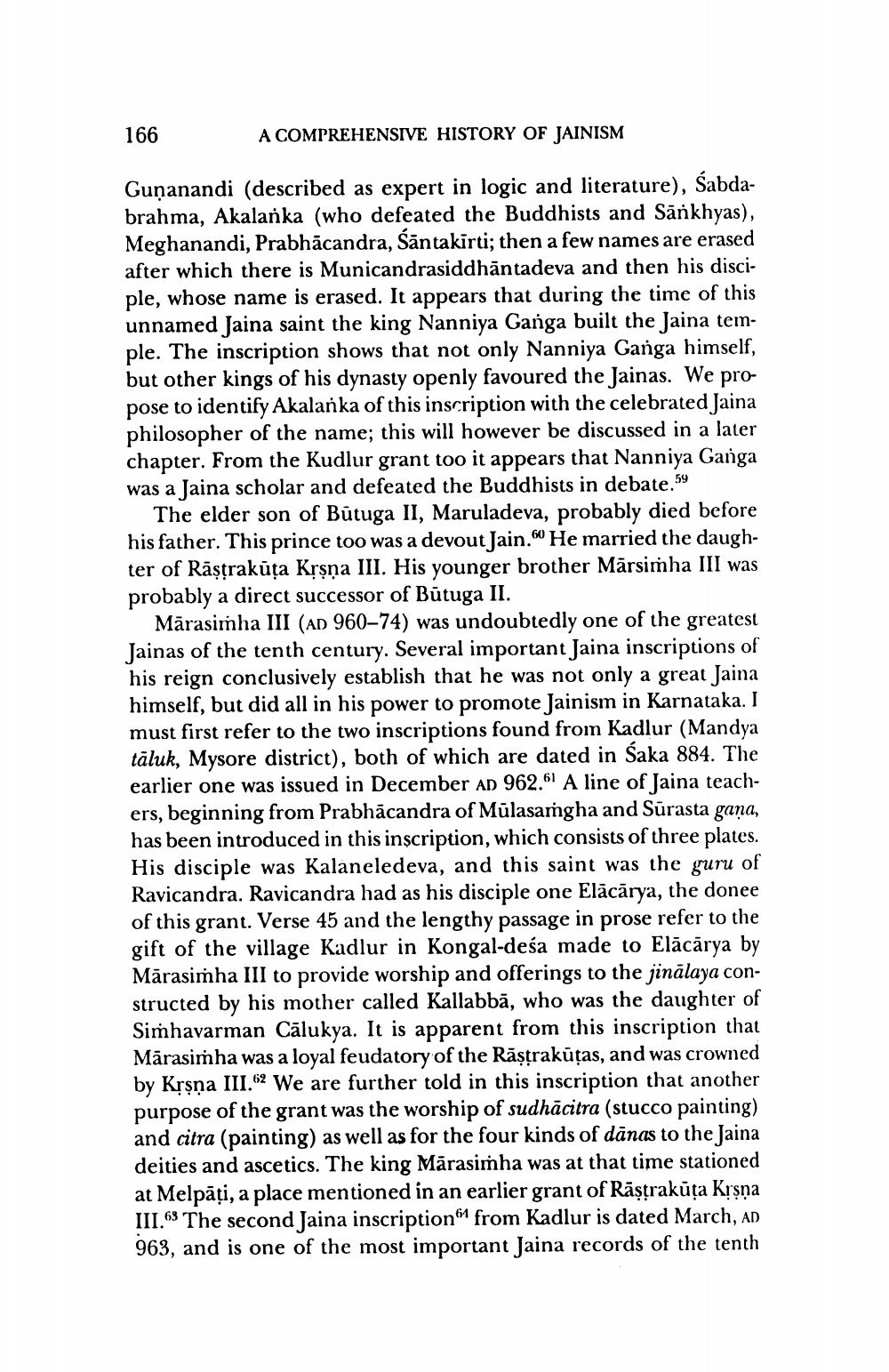________________
166
A COMPREHENSIVE HISTORY OF JAINISM
Guņanandi (described as expert in logic and literature), Sabdabrahma, Akalanka (who defeated the Buddhists and Sänkhyas), Meghanandi, Prabhācandra, Santakirti; then a few names are erased after which there is Municandrasiddhantadeva and then his disciple, whose name is erased. It appears that during the time of this unnamed Jaina saint the king Nanniya Ganga built the Jaina temple. The inscription shows that not only Nanniya Ganga himself, but other kings of his dynasty openly favoured the Jainas. We propose to identify Akalanka of this inscription with the celebrated Jaina philosopher of the name; this will however be discussed in a later chapter. From the Kudlur grant too it appears that Nanniya Ganga was a Jaina scholar and defeated the Buddhists in debate. 59
The elder son of Būtuga II, Maruladeva, probably died before his father. This prince too was a devout Jain. 60 He married the daughter of Rāstrakūta Krsna III. His younger brother Mārsimha III was probably a direct successor of Būtuga II.
Mārasimha III (AD 960–74) was undoubtedly one of the greatest Jainas of the tenth century. Several important Jaina inscriptions of his reign conclusively establish that he was not only a great Jaina himself, but did all in his power to promote Jainism in Karnataka. I must first refer to the two inscriptions found from Kadlur (Mandya tāluk, Mysore district), both of which are dated in Saka 884. The earlier one was issued in December ad 962.61 A line of Jaina teachers, beginning from Prabhācandra of Mūlasamgha and Sūrasta gana, has been introduced in this inscription, which consists of three plates. His disciple was Kalaneledeva, and this saint was the guru of Ravicandra. Ravicandra had as his disciple one Elācārya, the donee of this grant. Verse 45 and the lengthy passage in prose refer to the gift of the village Kadlur in Kongal-deśa made to Elācārya by Mārasimha III to provide worship and offerings to the jinālaya constructed by his mother called Kallabba, who was the daughter of Simhavarman Cālukya. It is apparent from this inscription that Mārasimha was a loyal feudatory of the Răstrakūtas, and was crowned by Krşņa III.62 We are further told in this inscription that another purpose of the grant was the worship of sudhācitra (stucco painting) and citra (painting) as well as for the four kinds of dānas to the Jaina deities and ascetics. The king Mārasimha was at that time stationed at Melpāti, a place mentioned in an earlier grant of Rāstrakūta Krsna III.63 The second Jaina inscription61 from Kadlur is dated March, AD 963, and is one of the most important Jaina records of the tenth




